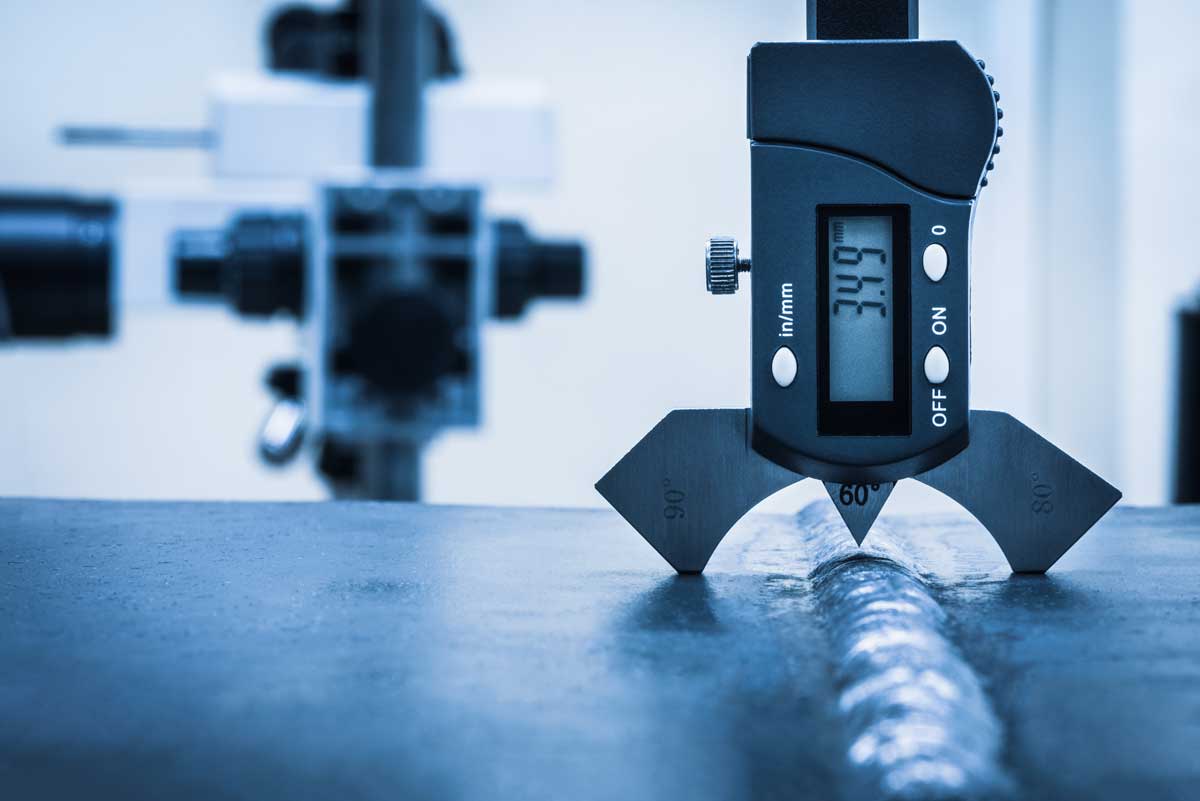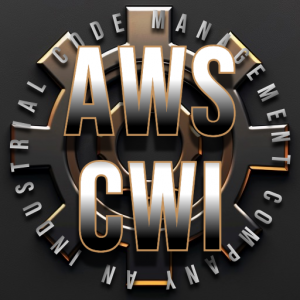Ingenious Methods to Fillet Weld Assessment and Screening: Enhancing Weld High Quality and Compliance Specifications
In the realm of welding, the quality and stability of fillet welds play a vital role in making sure the architectural soundness and reliability of different industrial parts. With the continuous drive for enhanced effectiveness and compliance with strict requirements, the exploration of innovative approaches to fillet weld assessment and screening has actually come to be important. As industries advance, the typical techniques may no more be enough in fulfilling the demands of modern welding applications. By embracing cutting-edge innovations and methods, a new perspective of opportunities arises in the realm of weld high quality evaluation and adherence to conformity standards.
Advanced Non-Destructive Screening Methods
Utilizing advanced technologies, progressed non-destructive testing methods play a critical function in ensuring the honesty and high quality of fillet welds. These techniques, such as phased array ultrasonic testing (PAUT) and magnetic particle screening (MPT), deal in-depth insights into the weld's inner framework without causing any damage to the material. PAUT, for instance, uses numerous ultrasonic aspects to check the weld from numerous angles, supplying an extensive visualization of potential problems like lack of fusion or fractures.
Likewise, MPT works in detecting surface-breaking problems by applying an electromagnetic field and iron fragments to the weld area. This approach is especially helpful for identifying interruptions that might jeopardize the weld's stamina. By utilizing these sophisticated non-destructive testing strategies, weld assessors can accurately analyze the top quality of fillet welds, making sure conformity with market criteria and regulations. The capability to spot defects beforehand not just improves weld high quality yet also protects against expensive rework or failings in architectural integrity, highlighting the relevance of these ingenious testing techniques in welding examinations.
Robotics and Automation in Evaluation
The assimilation of robotics and automation has reinvented the examination process for fillet welds, boosting performance and accuracy in high quality evaluation. Robotics provide precise control and repeatability in inspecting welds, making sure reputable and regular results. Automated systems can be set to adhere to particular inspection courses, guaranteeing complete insurance coverage of welds and minimizing the risk of human error.
Robotic evaluation systems geared up with advanced sensing units can discover and gauge weld features with high accuracy, offering comprehensive data for analysis. These systems can determine flaws such as cracks, absence of fusion, and porosity, enabling timely restorative actions to be taken. Additionally, robotics and automation permit real-time data collection and analysis, providing instant responses to operators and promoting quick decision-making procedures.
Furthermore, the usage of robotics and automation in fillet weld examination improves general productivity by minimizing evaluation times and boosting examination throughput. By enhancing the evaluation process, manufacturers can guarantee weld high quality and conformity standards are satisfied efficiently, inevitably resulting in cost financial savings and boosted product top quality.
Using Artificial Knowledge for Evaluation
Expert system plays a pivotal function in improving the performance and accuracy of analysis in fillet weld evaluation procedures. By harnessing the power of AI, assessors can enhance the evaluation of weld top quality and conformity criteria, resulting in much more accurate and reliable outcomes. AI formulas can swiftly process substantial quantities of information from weld inspections, spotting issues or variances that may be testing to understand the naked eye. This sophisticated modern technology allows real-time tracking of weld top quality, permitting instant rehabilitative actions to be taken if any type of issues are found.
In addition, AI systems can pick up from previous examination information, continuously improving their ability to recognize potential problems and deviations in fillet welds. This flexible discovering capacity improves the general quality control procedure, reducing the likelihood of human error and making sure that welds satisfy the required requirements. By integrating expert system into fillet weld evaluation, industries can attain greater levels of efficiency, consistency, and compliance in their assessment methods.
Portable Equipment for On-Site Inspection
 Enhancing field evaluation efficiency, the fostering of portable devices revolutionizes on-site analysis procedures for fillet welds. These tools provide versatility and benefit, permitting examiners to conduct thorough exams in numerous locations, consisting of remote or tough settings. Portable tools such like it as ultrasonic testing gadgets, magnetic bit examination devices, and electronic radiography systems offer real-time data and high-resolution imaging abilities, making it possible for quick decision-making and instant comments on weld top quality.
Enhancing field evaluation efficiency, the fostering of portable devices revolutionizes on-site analysis procedures for fillet welds. These tools provide versatility and benefit, permitting examiners to conduct thorough exams in numerous locations, consisting of remote or tough settings. Portable tools such like it as ultrasonic testing gadgets, magnetic bit examination devices, and electronic radiography systems offer real-time data and high-resolution imaging abilities, making it possible for quick decision-making and instant comments on weld top quality.One significant benefit of mobile tools is their capacity to enhance examination treatments, decreasing downtime and boosting general productivity. Examiners can quickly deliver these tools to various job websites, removing the demand for transporting hefty equipment or components to off-site facilities. Furthermore, the mobility of these tools promotes cost-effectiveness by decreasing transportation expenditures and speeding up inspection timelines.
Furthermore, using mobile devices for on-site inspection advertises aggressive high quality control steps, as examiners can immediately determine and deal with any prospective welding flaws or disparities. By integrating these ingenious innovations right into on-site evaluation practices, welding specialists can make certain conformity with industry standards and enhance weld top quality, ultimately resulting in improved architectural honesty and safety and security in various welding applications.
Integration of Data Management Systems
Having optimized on-site inspection procedures through the application of mobile devices, the next stage includes the smooth integration the original source of information monitoring systems to further enhance performance and data analysis abilities in fillet weld assessment and testing. Welding Inspection Racine. By incorporating information management systems into the inspection procedure, organizations can streamline information collection, storage space, and analysis. This assimilation enables real-time surveillance of weld quality, instant identification of problems, and timely decision-making to rectify any concerns that may arise throughout the examination procedure
The combination of data management systems allows seamless communication in between different stakeholders involved in the inspection procedure, fostering cooperation and boosting general quality control procedures. Ultimately, the integration of data management systems offers to raise the requirements of fillet weld examination and testing, making sure conformity with market guidelines and boosting weld high quality.
Verdict
In final thought, ingenious techniques to fillet weld inspection and testing have considerably boosted weld top quality and compliance criteria. Advanced non-destructive screening approaches, robotics, automation, expert system, mobile devices, and data management systems have actually reinvented the method weld assessments are performed. By making use of these technologies, sectors can ensure that welds fulfill the required quality criteria and guidelines, ultimately boosting total effectiveness and safety and security in welding processes.

By using these sophisticated non-destructive testing techniques, weld assessors can precisely evaluate the high quality of fillet welds, ensuring compliance with industry criteria and regulations. Mobile devices such as ultrasonic testing tools, magnetic fragment inspection tools, and digital radiography systems provide real-time information and high-resolution imaging capabilities, enabling quick decision-making and prompt comments on weld high quality.
Having actually maximized on-site evaluation procedures through the utilization of mobile devices, the next stage entails the smooth integration of data monitoring systems to further boost performance and data evaluation webpage capacities in fillet weld examination and screening (Welding Inspection Racine). Inevitably, the assimilation of information monitoring systems offers to boost the requirements of fillet weld evaluation and testing, ensuring conformity with sector laws and boosting weld top quality
 In conclusion, cutting-edge approaches to fillet weld assessment and testing have actually considerably improved weld quality and compliance standards.
In conclusion, cutting-edge approaches to fillet weld assessment and testing have actually considerably improved weld quality and compliance standards.